Menu
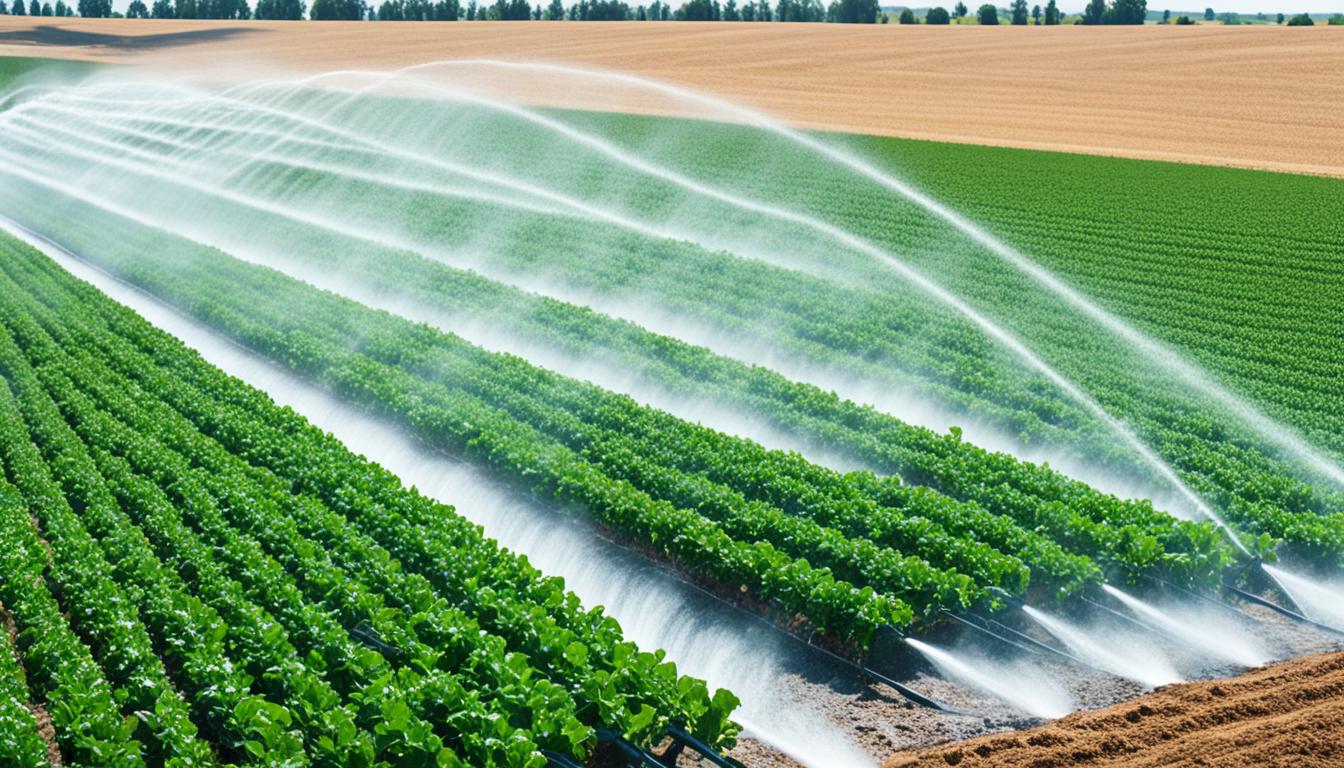
Inconsistent soil moisture can lead to problems like blossom end rot in tomatoes and peppers. This can greatly reduce the yield and how easily these crops can be sold. Fluctuating water levels pose a big challenge, especially in summers. Dry periods and heatwaves strain irrigation and farming.
To combat these challenges, it’s vital to have strong strategies for summer irrigation. These strategies should effectively manage water use and meet crop needs.
The Pacific Northwest’s summer landscape brings both challenges and chances for irrigation. Keeping water use effective during the harvest is crucial for crop health. It stops wilting and heat damage.
Using advanced irrigation methods like drip systems, and tracking weather closely, can help. It ensures water is used well. Also, improving irrigation tools and doing regular upkeep, plus smart actions like mulching, can make a big difference. These steps enhance summer irrigation’s effect.
Effective summer irrigation is crucial for the growth of crops during hot months. Weather changes can be extreme, so careful irrigation is key. Understanding these variations helps in using water well and managing summer water effectively.
It’s important to change how we water depending on the season. In spring, watering more helps roots grow deep, making the grass or crops healthier. But in summer, we need to watch water use closely and water smartly due to heat and evaporation.
Using modern irrigation systems can greatly improve our water use. Smart controllers adjust water schedules with the help of weather info. Soil moisture sensors use water exactly where and when it’s most needed.
Reducing water waste is also crucial. Drip systems stop water loss through evaporation by applying it directly to the soil. Plus, using rainwater saves drinking water and is better for the environment.
Picking the right tools is vital for saving water. Efficient sprinklers and other equipment reduce water use while keeping the land healthy. Also, maintaining these tools well helps them work better and longer.
In summer, a bit more water might be needed for a lush garden. Still, smart systems can help avoid unnecessary use, keeping the land healthy with less water.
| Service | Spring Package | Summer Package | Fall Package |
|---|---|---|---|
| Watering Schedule Adjustment | Gradual Increase | Advanced Techniques | Gradual Decrease |
| System Maintenance | Activation and Inspection | Mid-Season Checks | Winterisation |
| Water Conservation Measures | Initiate Smart Controllers | Maximise Drip Irrigation | Ensure System Efficiency |
Since 2005, Smart Irrigation Month in July has highlighted the need for water saving. By following these irrigation tips, we can keep the soil moist, reduce weeds, and improve how we use water for farming.
Weather patterns have a big effect on how well irrigation works. As the weather gets warmer and the growing season gets longer, farmers need to change how they water their crops. They must adapt to deal with more rain at once or less rain overall. This flexible approach to watering is crucial.
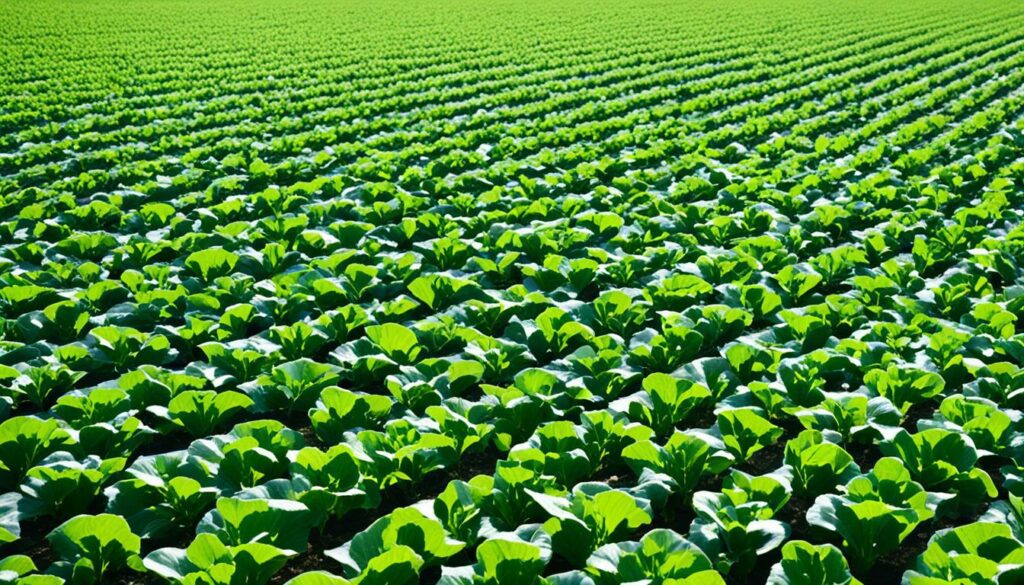
Predicting weather extremes is about looking ahead using weather data. This helps in getting ready for dry spells and heatwaves. Because of rising temperatures, keeping an eye on CO2 and water is important for plants. Farmers need to plan for longer times insects are active and how to handle them.
Also, the changing times when the ground freezes and thaws affect how well crops grow. It’s all part of watching and responding to nature’s shifts.
Changing when to water is key to working with nature’s rhythms. Using tools like soil moisture sensors makes irrigation smarter. This means watering fields at the right time and the right amount. It helps save water during times when crops need it most.
Also, technology helps respond to how melted snow affects water supply in places like the western US. It shows just how important it is to be able to change how to water the crops.
| Climate Change Impact | Adaptation Strategy |
|---|---|
| Increased Wildfire Activity | Enhanced Soil Management and Drought-Resistant Crops |
| Variable Water Availability | Soil Moisture Sensors and Smart Irrigation Techniques |
| Longer Growing Seasons | Optimised Irrigation Schedules and Weather Monitoring |
Pairing smart watering with good planning helps crops do better despite the changing weather. It’s all about using the best strategies and keeping an eye on the numbers. This helps create a future for farming that’s successful and works with nature.
With droughts becoming more common, over 86% of Texas is struggling. As a result, saving water is key for farming that lasts. Using the right summer water management techniques can ease the pressure on water. This is vital to keep crops healthy.
In saving water, smart irrigation systems are top notch. Drip and pivot/linear systems make sure water goes exactly where it’s needed. This cuts down on waste and loss through evaporation. They bring smart irrigation solutions right to your crops.
Choosing these systems saves a lot of water and leads to better crop growth. They work precisely, cutting down on excess water and run-off. This meets sustainable farming goals perfectly.
Adding soil moisture sensors takes summer water management techniques to another level. They give real-time soil moisture info, making sharp watering plans tailored to your crops. Water is used efficiently, preventing both too much and too little water.
Using these sensors can improve deep watering. This helps wet 6 inches of soil, making roots healthier and decreasing how often you need to water. It really shows the power of smart irrigation solutions in farming today.
Sustainable irrigation aims to handle today’s farm needs without harming tomorrow. This makes it super important for farming’s future health. Agriculture uses most of our fresh water, so sustainable irrigation matters a lot for food safety. It focuses on using water and energy smartly, protecting nature, reusing water, and being cost-effective.
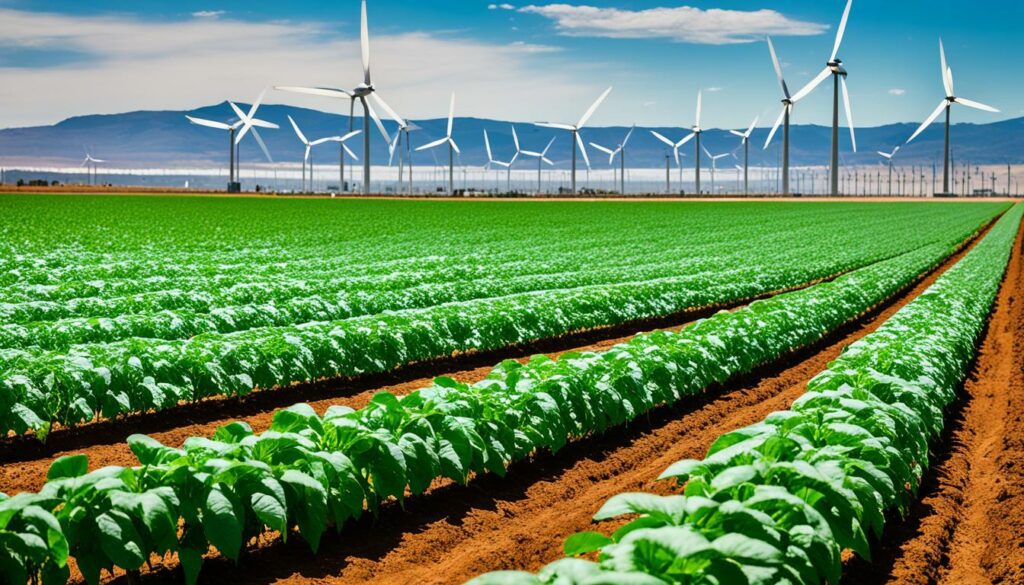
Matching what crops need with saving water is key. For example, managing soil water in the winter can boost crop yields and save water. This means farming can keep going strong. Sustainable irrigation also means looking after water from the ground, rivers, and lakes.
Today, smart farms use technology like sensors to water only when needed. Drip systems put water right where it’s needed, using less and keeping plants healthy. Yet, sprinklers are good all around but can get blocked.
Climate change affects when and how much we need to water. This can change the air we breathe too. With less water, it’s crucial we irrigate wisely, using tricks like trickle irrigation that save a lot of water.
So, farmers using smart irrigation not only grow strong crops but also save water for our kids’ future.
In the Pacific Northwest, summers bring spotty rain, dry weather, and hot spells. This makes it crucial to water summer crops wisely. Systems like drip irrigation or pivot/linear setups help decrease water loss. They also avoid water waste by sending water straight to the root zones of plants.
Checking soil moisture with sensors is key. It helps time waterings right, preventing either too little or too much water. Maintaining irrigation gear is also vital. It ensures they work well, fixing leaks that might waste water when it’s needed most.
Water when it’s cooler, like at dawn or dusk, to cut down on water that evaporates. Use efficient methods for handling crops after they’re picked. This lessens water loss and ups the number of crops you get from your efforts.
New tools, like drip systems and smart controls, make farming smarter. They use less water but still help plants grow well. For example, plants like tomatoes and corn can have roots that go very deep. This shows why it’s important to water in a way that gets to these deep roots.
“To maximise production efficiency and meet crop requirements without compromising groundwater resources, adopting climate-smart planning is essential.”
Soaker hoses and drip systems are great for giving water right to the roots. This method is known as the best way of watering crops in summer. Using timers and filters with these systems makes watering very accurate. Remember, how often you water should match the type of soil you have.
When it’s hot, windy, and dry, plants need more water and the ground loses moisture faster. This means you might have to water more often. Remember, plants in pots will often need more water too, because their roots can’t spread out as far. Covering the ground with things like compost or even plastic can stop water from evaporating too quickly.
| System | Advantages | Recommendations |
|---|---|---|
| Drip Irrigation | Minimises water wastage, enhances precision | Ideal for summer crops with deep roots |
| Soaker Hoses | Slow water absorption, reduces runoff | Best for dense plantings or individual crops |
| Pivot/Linear Systems | Reduces evaporation, consistent watering | Highly effective for large fields |
Drip systems and soaker hoses are great at saving water by slowly giving it to plants. They avoid wasting water by sending it right to the plants without causing the water to run off or be wasted. By using technology like rain and soil sensors with these systems, we can make our water use even smarter.
By using these water-saving ideas, we can grow our crops without using more water than we should. This helps us keep farming even when the summer weather is tough.
Using modern irrigation methods for summer is key to using water wisely and keeping crops healthy during hot weather. Drip irrigation, pivot, and linear systems are at the heart of this efficient water use.
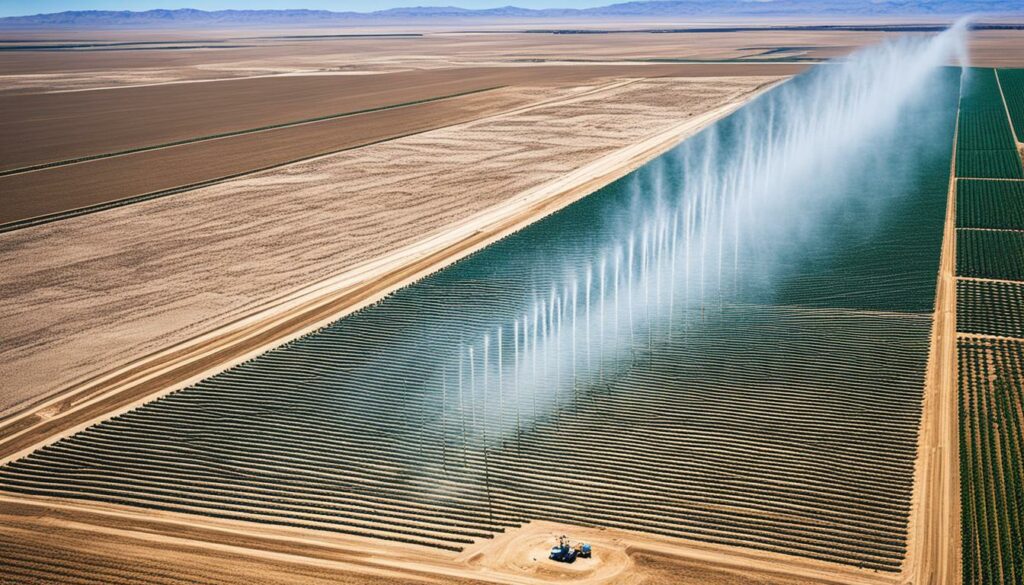
Drip irrigation is top when it comes to saving water in summer. It puts water right next to the plants, cutting back on water lost to the air or ground. This slow watering also helps the roots grow deep for healthier plants.
Pivot and linear systems are high-tech ways to spread water evenly over fields. They are very useful in summer, making sure plants get just the water they need. This stops water from going where it shouldn’t, protecting our rivers. These systems can also be made smarter with technology that checks the weather and soil to water only when needed.
Aligning sprinklers right and using systems that don’t use much water are good for both the land and the plants. These steps, alongside the latest in irrigation, cut down on wasted water. This makes sure crops get enough water without harming the environment.
Best soil management is key to getting enough water, especially in summer. The right soil care helps crops get the water they need. This leads to better growth and more crop yield. We’ll look into how mulching and cover crops are vital for keeping soil hydrated in summer.
Mulching stands out as a top soil management technique. It involves covering the soil with either natural or man-made materials. This layer keeps water in, stops soil from washing away, and keeps the soil’s temperature stable. If you use natural mulches like straw or wood chips, they break down over time. This adds important nutrients to the soil.
In contrast, man-made mulches such as plastic don’t break down. But they’re great for stopping weeds and keeping moisture in the soil.
“Kuhls account for 85.83% of the total area under irrigation in hilly regions.”
Cover crops are another important tool in the soil management box. Unlike food crops, cover crops are grown to help the soil, not to produce food directly. They help stop soil from washing away, make the soil richer, and help it hold water. Plants like peas, rye, and cabbage are great at this job. They grow deep roots that make the soil structure better and able to hold more water.
To sum up, looking after soil by mulching and using cover crops is crucial for summer. These tricks help keep the soil moist. They also make using water more effective. This is key for managing water in a smart and sustainable way in the hot months.
Keeping your irrigation system at its best means looking after it closely. By checking it regularly and fixing small problems, you can avoid big issues later. This is especially important in summer when plenty of water is needed.
Checking your system often helps spot any faults. Problems like blockages or leaks in valves, pipes, and emitters can stop the water from flowing properly. By doing this, you keep your system running smoothly when it’s used the most.
Nozzles can get blocked and stop working well over time. Cleaning them now and then or getting new ones can make sure water spreads evenly. This isn’t just good for the plants, it’s a key part of using water wisely.
Sticking to a strong maintenance plan for your system does a lot. It stops big problems, saves water, and makes sure your system is ready for summer’s needs.
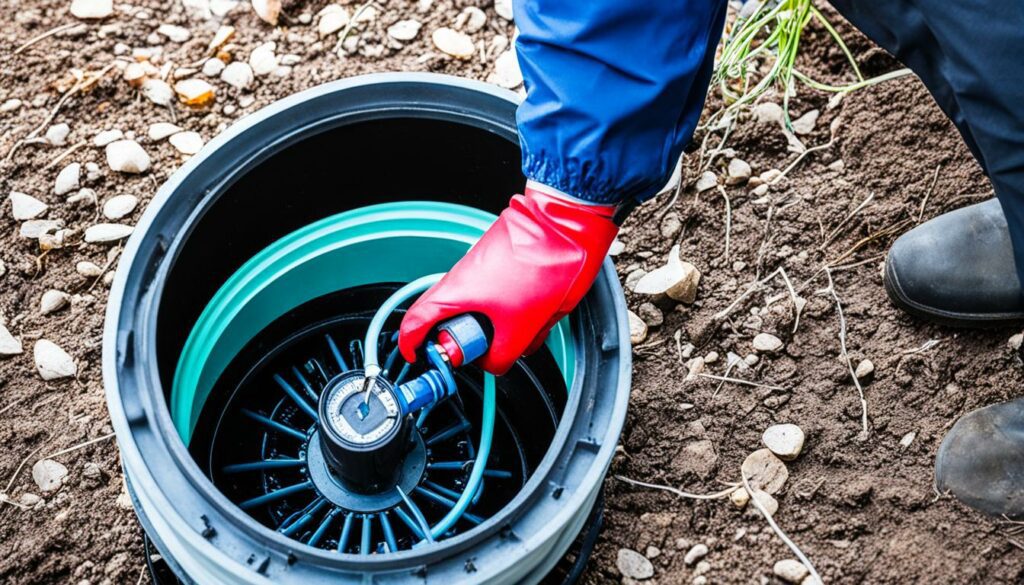
| Maintenance Task | Frequency | Reason |
|---|---|---|
| Check Valves and Pipes | Monthly | Prevent leaks and ensure optimal flow |
| Clean Nozzles | Bi-Monthly | Remove debris and maintain water distribution |
| Replace Nozzles | Annually | Ensure consistent water flow |
It’s key to know the reasons behind how much water crops need. The weather, the crop’s kind, and how it’s growing all make a big difference. The right pH level for water is 5.0 to 7.0. It should have 30 to 60 ppm of calcium carbonate. But in places like Massachusetts, water might be more alkaline. Here, the pH can be 7 or 8.
We use today’s tech to figure out how much water crops need. This includes lots of research and testing. These methods help us get the exact amount of water right, saving resources and boosting crops. For crops like winter wheat, using a special watering plan helps a lot.
Sometimes, water might be too alkaline, needing acid added. Common acids to use are phosphoric, sulfuric, nitric, or citric. But, be careful with phosphoric acid. Don’t use more than 2.25 fluid ounces per 100 gallons to stay safe.
Watering crops makes up 70% of the world’s use of fresh water. It helps grow more food, up to four times than just depending on rain. Right now, irrigation grows 40% of our food on only 20% of the land used for farming. Good irrigation plans are very important for the future of farming.
The right time to irrigate can help save water and boost crop growth. Doing it when it’s cooler, like early morning or late evening, is key. This is because less water evaporates then. In places with a lot of rain, such as the Cotton Belt, picking the best time is crucial. It allows farmers to use water more efficiently and get better crop yields.
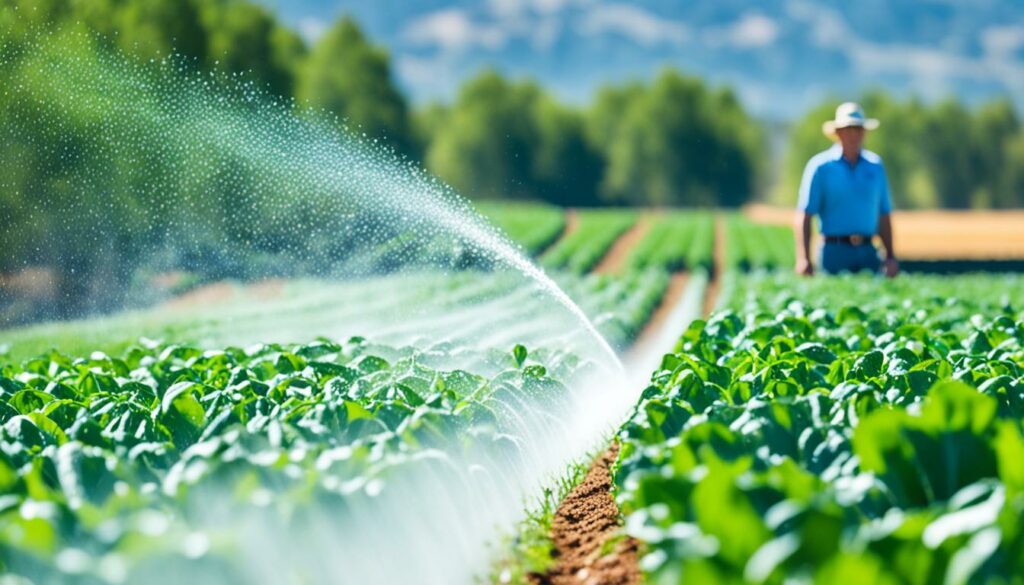
Water loss is much less when you irrigate in the cooler parts of the day. For example, in the morning or at night. This is especially important in areas that get a lot of rain. There, making the most of the water you have can mean big gains for your crops.
Also, in places with sandy soil, getting irrigation right can almost double cotton yields. This is from about 750 to 1,200 to 1,500 pounds of lint per acre in dry years. Using modern, water-efficient cotton can make each inch of water do a lot more work too. It can turn just one inch of water into 60 pounds of lint and 90 pounds of seed.
In the U.S., only about 35% of cotton fields get irrigation. But improving watering practices can help farmers grow more, using less water. This means being careful not to lose water to deep leaching or runoff. It also involves making sure irrigation systems work well.
Globally, most freshwater is used for irrigation. So, using water better not only helps farmers but also saves water for everyone. It’s an important step towards growing more food with the water we have. This is a goal that’s good for the environment and for food security.
Using advanced irrigation scheduling helps a lot. It’s good for plants and the environment. With smart systems, farmers don’t waste water. This makes crops better and saves money.
Looking at weather data changes how we water crops. Farmers can see the best times to water by checking the forecast. This stops plants from getting too much water when it rains. It also makes sure they get enough during dry times. This kind of irrigation is smart and saves water. It also improves the crops.
Monitoring the moisture in the soil is key for good irrigation. Tensiometers help by showing how hard plants have to work to get water. This information is vital. It prevents plants from either drowning or being too dry. Placing tensiometers at specific spots in the soil helps a lot. It lets farmers water precisely where it’s needed. Better use of water means better crops and helps the environment.
Advanced technologies are changing how we use water in farming. Smart irrigation systems can cut water use by 30-50%. This helps make farming more sustainable. Also, these systems can boost crop yields by up to 20%. This is great news for farmers who want to improve their farms.
The smart irrigation market is growing fast. In 2021, it was worth $1.2 billion. By 2027, it could hit $2.7 billion. Its growth is helped by more use of IoT in farming. This tech not only saves water but also helps with the world’s water crises.
In places like Morocco and Jordan, the GEAR Lab is doing amazing things. Their irrigation tech has cut water use by over 40%. It also slashed energy use by 38%. And their controllers work with phones, making them easy to use. In Kenya, they help with education and good irrigation plans.
Most farms are small and in places with little water. For these farms, smart tech like GEAR Lab’s is key. Their drip emitters save a lot of energy. Using these technologies, farmers can use water more wisely. This helps ensure farming can keep going in a sustainable way.
Good summer watering methods are key. These include drip irrigation and systems that cover fields efficiently. They save water and keep crops well hydrated.
It’s vital to water crops well in summer. This helps crops stay healthy and produces good harvests. It also saves soil from drying up and manages water well.
Dry times and heatwaves impact how much water crops need. Adjusting irrigation to match the weather helps. This manages water better and keeps crops in good shape.
To save water, try efficient watering systems like drip lines and smart soil sensors. Covering soil with mulch helps it keep moisture without extra watering.
When watering, aiming for both crop health and saving water is key. Use modern methods and look after the soil and equipment well for the best results.
For summer crops, smart irrigation is best. Use drip lines and soil sensors to water plants where they need it most. This reduces waste and boosts growth.
Drip lines are a great new way to water plants. They aim at roots directly. Large systems also spread water evenly, wasting less while offering full cover.
Techniques like mulching keep soil moist and cool. They help soil hold onto water better, making sure plants are well-watered all summer.
Keeping irrigation equipment in good shape avoids water problems. Regular checks and cleaning mean water gets to crops as needed. This is vital for a good harvest.
The type of crop, its growth stage, and the local climate set its water needs. Knowing these lets you water efficiently, leading to better crops and saving resources.
Water early or late in the day to cut down on evaporation. This saves water and helps plants use what they get more effectively. It’s a win-win for all.
Using data to know when to water is smart. It suggests the best times and amounts. This approach helps crops thrive while using water wisely.
New gadgets like short sprinklers and clever sensors are shaping irrigation. They make sure plants get just the right amount of water. This boosts both water saving and crop success.